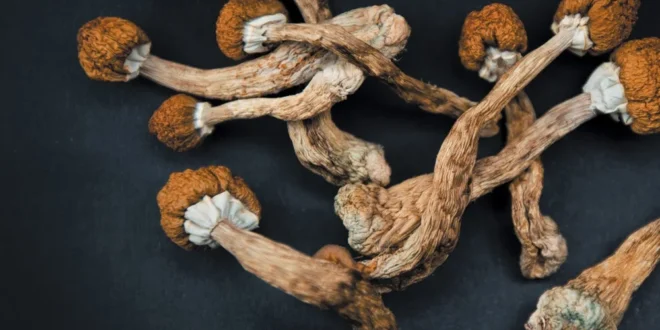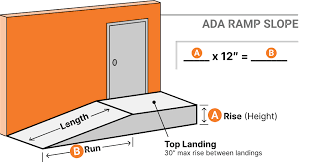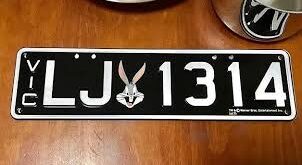Psilocybin mushrooms, also known as magic mushrooms, have gained attention for their potential therapeutic and psychoactive effects. As their popularity grows, so do questions regarding their proper handling, particularly how long they last and how to store them. For anyone interested in psilocybin mushrooms, it is important to understand their shelf life, potential risks, and the best ways to store them to ensure safety and efficacy.
In this guide, we will explore whether psilocybin mushrooms go bad, how to store them effectively, and safety tips for consumption.
1. Do Psilocybin Mushrooms Go Bad?
Understanding the Shelf Life of Psilocybin Mushrooms
One of the first questions that come to mind for those new to magic mushrooms is, “Can psilocybin mushrooms go bad?” The short answer is yes, they can. Psilocybin mushrooms, like all organic materials, are prone to decay over time due to exposure to air, moisture, and bacteria. Fresh mushrooms are especially susceptible to spoilage, and improper storage can accelerate this process.
The shelf life of psilocybin mushrooms depends on their form—whether they are fresh or dried. Fresh mushrooms typically last only a few days to a week when stored in a refrigerator, while dried mushrooms can last much longer. However, even dried mushrooms are not immune to degradation if not stored properly.
Over time, the potency of psilocybin mushrooms can also decrease. Psilocybin, the psychoactive compound in these mushrooms, gradually breaks down when exposed to oxygen, light, and moisture. Therefore, storing them properly is crucial to maintaining their efficacy and safety.
2. Factors That Affect the Shelf Life of Psilocybin Mushrooms
Key Elements that Lead to Spoilage
Several factors can influence how long psilocybin mushrooms stay fresh and potent. These factors include:
- Moisture: Moist environments promote the growth of mold and bacteria. Fresh mushrooms contain high moisture content, making them vulnerable to spoilage. Dried mushrooms, if exposed to humidity, can also reabsorb moisture and become prone to decay.
- Temperature: Storing mushrooms at room temperature can significantly reduce their shelf life. Higher temperatures speed up the breakdown of psilocybin and encourage the growth of mold and bacteria. Keeping mushrooms in a cool, dry place is essential.
- Light Exposure: Light, especially direct sunlight, can degrade psilocybin, reducing the potency of the mushrooms over time. Dried mushrooms should be stored in a dark container to limit light exposure.
- Oxygen: Oxygen exposure can lead to oxidation, causing mushrooms to lose their potency. Storing dried mushrooms in airtight containers can help minimize this issue.
By understanding these factors, individuals can take appropriate steps to store their psilocybin mushrooms safely and prolong their shelf life.
3. How to Properly Store Psilocybin Mushrooms
Effective Storage Techniques for Fresh and Dried Mushrooms
Proper storage is the key to ensuring that psilocybin mushrooms remain safe to consume and retain their potency. Here’s how to store both fresh and dried mushrooms:
Storing Fresh Psilocybin Mushrooms
Fresh mushrooms have a short shelf life, lasting about 5 to 10 days when stored in a refrigerator. To keep them fresh for as long as possible:
- Refrigerate Immediately: Place the mushrooms in a paper bag or wrap them loosely in a paper towel before putting them in the refrigerator. Avoid storing them in plastic bags, as this can trap moisture and cause them to rot.
- Check for Spoilage: If you notice any sliminess, dark spots, or an unpleasant odor, it is best to discard the mushrooms as they may have spoiled.
Storing Dried Psilocybin Mushrooms
Dried mushrooms can last for months or even years if stored correctly. Follow these steps for proper storage:
- Use Airtight Containers: Store dried mushrooms in airtight containers, such as glass jars with tight-fitting lids. This helps protect them from moisture and oxygen exposure.
- Add Desiccants: To absorb any residual moisture, consider placing a desiccant packet (silica gel) inside the container.
- Store in a Cool, Dark Place: Keep the container in a cool, dark area, such as a pantry or cupboard, away from heat sources and direct sunlight.
- Vacuum Sealing for Long-Term Storage: For long-term storage, vacuum-sealing dried mushrooms is a highly effective method. Removing air from the packaging minimizes oxidation and helps preserve the mushrooms for a much longer period.
4. Identifying Spoiled Psilocybin Mushrooms
Signs That Psilocybin Mushrooms Have Gone Bad
Even with proper storage, mushrooms may eventually go bad. It is important to know the signs of spoilage to avoid consuming unsafe mushrooms.
- Fresh Mushrooms: If they become slimy, emit a foul odor, or develop dark spots, they have likely spoiled. The texture will also become soft and mushy, signaling bacterial growth.
- Dried Mushrooms: Mold is the most obvious sign of spoilage in dried mushrooms. If you notice any mold growth, discoloration, or a musty smell, discard the mushrooms immediately.
If you are unsure whether your mushrooms have gone bad, it is safer to dispose of them rather than risk potential health issues from consuming spoiled mushrooms.
5. Health and Safety Concerns
Risks of Consuming Spoiled Mushrooms
Eating spoiled psilocybin mushrooms can pose significant health risks. Spoiled mushrooms, whether fresh or dried, can harbor harmful bacteria, mold, or toxins that may lead to gastrointestinal issues, nausea, vomiting, or food poisoning.
Moreover, if the psilocybin content has degraded, consuming older mushrooms may result in a weakened or unpredictable psychoactive effect. For these reasons, it is essential to regularly check the condition of stored mushrooms and discard any that show signs of spoilage.
Additionally, individuals new to psilocybin mushrooms should always approach them with caution, particularly in regards to dosage. Always start with a small dose, as the potency can vary depending on factors like the mushroom species and storage conditions.
6. Safety Tips for Handling and Using Psilocybin Mushrooms
Best Practices for Safe Consumption
To ensure a safe experience when using psilocybin mushrooms, follow these best practices:
- Test Potency Before Use: If you have stored mushrooms for an extended period, consider testing a small amount to gauge their potency before consuming a full dose. This will help avoid unexpected effects.
- Practice Safe Dosing: Start with a low dose, especially if you are new to psilocybin or using a new batch of mushrooms. Gradually increase the dose only after assessing the effects.
- Ensure a Safe Environment: For first-time users, ensure you are in a comfortable, safe environment, preferably with a trusted friend who can act as a sober guide.
- Store Responsibly: Keep psilocybin mushrooms out of reach of children, pets, and anyone who should not have access to them. Proper storage also ensures that others will not accidentally consume them.
Conclusion
Psilocybin mushrooms can indeed go bad, but with proper storage techniques, their shelf life can be extended significantly. Fresh mushrooms require refrigeration and should be consumed within a week, while dried mushrooms can last much longer when stored in airtight containers in a cool, dark place. Always check for signs of spoilage and practice safe consumption to avoid health risks.
By understanding how to store psilocybin mushrooms correctly, you can ensure that they remain safe to use and retain their potency for as long as possible.
Are you passionate about sharing your insights and expertise? We invite you to write for us! Whether you’re a seasoned writer or just starting out. We’re looking for fresh perspectives on a variety of topics, from lifestyle and wellness to technology and travel.
 Lifeyet News Lifeyet News
Lifeyet News Lifeyet News





